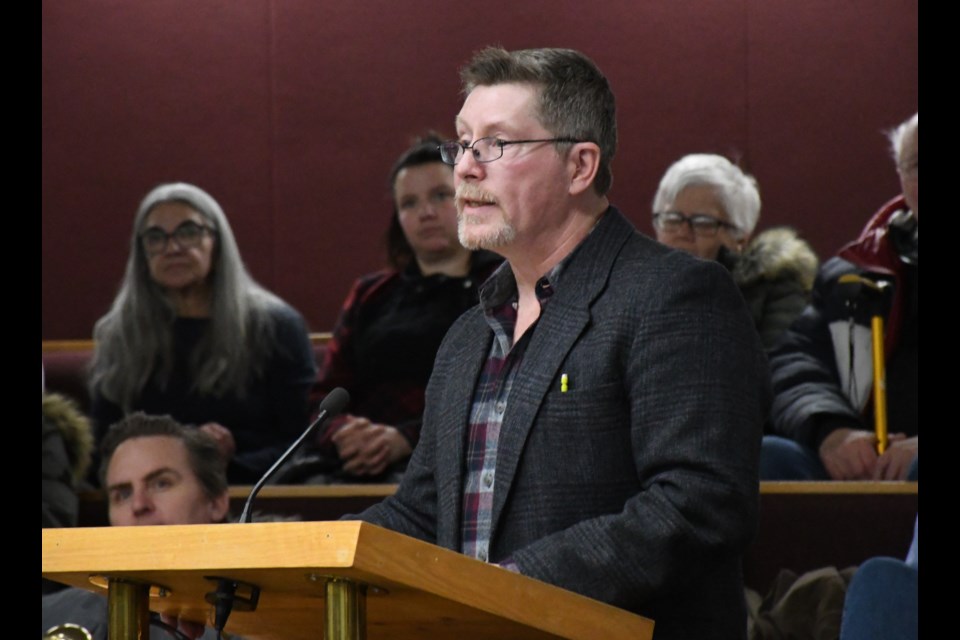MOOSE JAW — Archaeological findings at a site in Wakamow Valley suggest the area was “an intensively used campsite” that First Nations people may have used repeatedly over the centuries, a researcher says.
Alan Korejbo, , gave a presentation to city hall’s heritage advisory committee — with over 70 residents in attendance — on Jan. 16 about the results that he and his team uncovered while sifting through soil
There are two sites in the northwest corner of Wakamow Valley that researchers have inspected over the decades — the Davies site and the Garratt site — with the former suggesting human occupation for 1,540 years and the latter suggesting human habitation for 2,300 years, Korejbo said.
While the Davies site has a “special nature,” it was the Garratt site — in a flood plain adjacent to Ninth Avenue Southwest/Highway 363 — where Korejbo and his team focused.
They conducted pre-impact assessments in 2023, which included 117 shovel tests that dug 100 centimetres below the surface and uncovered 99 items of archaeological interest.
“The probability is the entire area contains archaeological resources,” he said, noting that those preliminary digs unearthed fire hearths, intact, well-preserved and unique pottery, stone and bone tools and areas of high archaeological material density.
The pre-impact studies also suggested that further, more refined studies — archaeological excavation — were required, so Korejbo’s team began formal investigations.
So, last year, the team conducted excavations totalling 72.25 square metres with depths 120 centimetres below the surface. Moreover, they conducted selective depth tests to 340 centimetres but did not find anything of significance.
The team discovered more than 200,000 artifacts, with most items being unidentifiable bone fragments and some stone artifacts such as knives, scrapers, projectile points, shaft straighteners, and possibly a stone hoe used for digging.
Furthermore, researchers found a bison scapula cache and stone cairns. Preliminary research showed the bones were well-used, processed, burned and warped. They also found a bone nail and a 1917 coin.
“There is still a lot of work left to be done on this project. We still need to finish cataloguing everything (since about 50 per cent is done) before we know any exact numbers,” said Korejbo. “And we’ll need to further work in the lab … to better understand the site.”
The site also contains main fire hearths, which suggests it was “an intensively used campsite” for over 2,300 years, he continued. Moreover, the well-preserved pottery is similar to that found in the Dakotas and southwestern Manitoba where horticulture existed, which suggests a movement of people and ideas.
Korejbo noted that there is preserved carbonized material on the pottery that could allow researchers to determine what the people ate. Furthermore, archaeologists found well-preserved seeds from soil samples 56 centimetres below the surface, which is a “very rare” occurrence.
Besides cataloguing, researchers must conduct radiocarbon dating, residue analyses and soil analyses, write four separate permit reports and submit them to the province’s heritage conservation branch and the Royal Saskatchewan Museum.
“The level of preservation and diversity of cultural remains observed here exceeds that which is generally observed in archaeological sites in Saskatchewan,” said Korejbo. “The stratified nature of the site enables archaeologists to study culture change over two millennia.”
Stratification of soil layers is common in a flood plain, where people use an area, floods cover it with silt and dirt, and the cycle repeats, the researcher remarked.
The numerous bone tools uncovered — especially the hoes — suggest people practised pre-contact horticulture, which paints a different picture than researchers have about that period in southern Saskatchewan, he continued.
Besides being bison hunters, such people may have also cultivated domestic plants such as beans, corn and squash.
“Currently, this site may be the stronger evidence of this diverging way of life in Saskatchewan,” Korejbo said but cautioned that this is still preliminary speculation.
The researcher added that an archaeological field school could be established in Moose Jaw because “this is a very rich site” of undisturbed artifacts.




